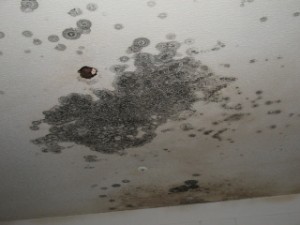Indoor Air Quality: Interview with a Mold Assessment Consultant (MAC)
- Posted on: November 18, 2011
Welcome back!
For this installment we are focusing our attention on the ins and outs of being a licensed Mold Assessment Consultant (MAC). Many of you may or may not know that Texas is a rare bird as far as mold regulation and licensing are concerned. In fact, anyone associated with mold and mold related procedures must be licensed by the Texas Department of State Health Services. I believe that Texas is the only state who requires special licensing; however Google shows both Virginia and Louisiana possibly having some type of regulations of mold as well.
For help understanding the Consultant’s role in Indoor Air Quality projects, we contacted Garey Hackney of EcoSystems Environmental, Inc. (ESEI) ESEI established in 1989, is a full service environmental consulting firm with an in house NVLAP accredited asbestos lab. The home office is based in the Dallas area with an additional office located in Austin. Garey alone has over 22 years of environmental industry experience including asbestos, mold, and lead. Below you’ll find an informal interview where I asked Garey some questions about his work. Are you ready to jump in?
Moldlab asks:
1. Are there any significant differences between an Asbestos containment set up and a Mold containment set up?
Garey answers:
Depending on the type(s) of asbestos-containing materials (ACM) being removed, there can be significant differences.
- For example, if a spray-applied acoustical ceiling is being either scraped or demolished, critical barriers must be placed over all openings and penetrations (windows, doors, HVAC vents, etc.); all walls within the containment area must be covered with a minimum of two (2) layers of four-mil polyethylene sheeting, overlapped six to twelve inches; the wall poly should wrap the floor poly typically a minimum of twelve inches; the floor poly in turn will wrap the wall poly typically twelve inches. Floors and walls are typically installed in alternating fashion (1 layer of wall, 1 layer of floor; 2nd layer of wall, 2nd layer of floor).
- A full three stage wet decontamination chamber must be attached to the containment area. Some states require five stage decontamination chambers. Oftentimes on a large project, a wet waste decontamination chamber is attached to the containment for decontamination of the waste as it comes from the work area.
- Full negative pressure, minimum of at least 0.02 inches of water column differential (verified by a manometer with a tape print out) between the containment and outside and a minimum of four air changes per hour. Negative air machines must run continually until final air clearances are achieved.
This next question is completely hypothetical, but I think it would be really informative to understand the thought process of seasoned professional. Below is a typical mold containment project.
2. Given the following situation, how do you determine if the job passes clearance or not?
Scenario:
- small mold contamination project less than 1,000 sq. feet
- 10 ft. x 8 ft. of visible growth on sheetrock, no wall cavity damage
- Initial tape lift / surface results were positive for Aspergillus / Penicillium types
- Unoccupied building, realtor is trying to sell commercial property
- Remediation company has completed the written protocol
- Clearance air sampling tests results show all mold type counts lower than the outside control except for Aspergillus. The Aspergillus count in containment is 350 spores/ M cubed and the Outside Aspergillus count was 100 spores per/Mcubed.
Do you pass the project?
Garey answers:
As your scenario is written, I would not pass the containment from the air sample results. Our company makes that decision based upon what our clearance criteria was for the project. After subtracting our outdoor totals from our containment sample totals, our clearance criteria is that no single genus can be greater than 200 spores/m3. If this happened to be Stachybotrys, the clearance result is much less than the 200 spores/m3.
3. What is the difference between a Mold Assessment Consultant and a Mold Assessment Technician? Can a person be licensed as both?
Garey answers:
A Mold Assessment Technician (MAT) is authorized to determine the extent of mold or suspected mold in a facility. He/she can record visual observations; take measurements (temperature, relative humidity and moisture levels) during an initial or post-remediation mold assessment; prepare a mold assessment report; and as directed by a onsite Mold Assessment Consultant, collect samples during a post-remediation mold assessment.
A Mold Assessment Consultant (MAC) can do all of the above and is not required to be licensed as both.
4. If you were just starting out in the industry given what you know now, what advice would you give a ‘newbie’ to field?
Garey answers:
Start with a good training program. The Texas Mold Assessment and Remediation Rules (TMARR) require a training class before taking an examination for a license. Attend seminars and conferences; read (numerous good books available); get assistance from experienced individuals.
5. Do you think having years of experience in the Asbestos industry has helped or hindered the Mold side of your business?
Garey answers:
I think it has helped the mold side of our business. There are many people in the industry who have no asbestos experience and do not realize that if a mold project which involves drywall and acoustical ceilings falls under TMARR, and it is in a “public access building”, which is regulated by the Texas Asbestos Health Protection Rules (TAHPR), then an asbestos survey to determine the presence or absence of regulated asbestos-containing materials is required before any mold remediation can occur. Mold remediation in Texas is deemed a renovation activity. Under the Texas Asbestos Health Protection Rules (TAHPR), “§295.34 ASBESTOS MANAGEMENT IN FACILITIES AND PUBLIC BUILDING (c) Conditions requiring a mandatory asbestos inspections for ACBM” an asbestos survey is required prior renovation or demolition activities. A renovation for the purposes of the TAHPR defines renovation as “additions to or alterations of the building for purposes of restoration by removal, repairing, and rebuilding”.
If the analytical data from the samples of the materials that require mold remediation result in a concentration of >1%, then the material is regulated as asbestos-containing material (ACM); now the project becomes a dual project. Two notifications are required with the asbestos notification superseding the mold notification. Instead of a 5 business day notification, you now have a 10 business day notification with no abatement starting until the 11th day. You now have two sets of clearances, asbestos first then mold. If the MAC is not licensed for asbestos, then he/she cannot enter the containment until the asbestos clearance sampling is completed and met clearance criteria. If a protocol calls for “ceasing negative pressure” after the final visual assessment is complete and has passed, then that has to wait until the asbestos clearances have passed, because negative pressure must be maintained until asbestos final clearances have been achieved. In this scenario, the mold portion of the project could be delayed for 24 – 48 hours depending on how the MAC wrote the protocol and if air scrubbing was required or recommended for 24 hours (+/-) in the remediation protocol.
Need a HUB certified lab?
Great reports, complete with full color comparison charts and graphs… Try us free! click here for coupon.
6. In your opinion, how likely to you think it will be that Mold will become regulated like the Asbestos industry did about 20 years ago with the AHERA rules?
Garey answers:
My personal opinion is that I do not believe that will happen. AHERA required identifying suspect asbestos-containing material, where it was located, assessing the condition of the known or suspected ACM and putting a plan in place to manage it. Known health effects have resulted from exposure to ACM (lung cancer, asbestosis, mesothelioma and other cancers). Latency periods for these diseases range from 15 – 40 years following exposure. There are established exposure limits. There is no known dose response.
Please understand that I am not minimizing exposure to molds. I have a client that basically cannot walk into a building with mold, whether visible or not. She is very sensitive to it. I have worked with her on projects that resulted in her missing 1 – 3 days of work following her exposure.
I can’t tell you how many times over the years I’ve had people tell me that they have worked around asbestos all their lives and it hasn’t bothered them yet. And I have had people tell me that mold is mold and it can’t hurt anyone.
7. What are some of the requirements to keep your Mold Assessment Consultant current?
Garey answers:
In Texas, an 8-hour refresher course is required every two years.
8. Are there any differences between a commercial and a residential Mold job?
Garey answers:
In my opinion the answer is no. Mold is mold and it shouldn’t be there, but there is a reason it is there, whether it is in a residence or a commercial building. Find the causation and fix the causation (which in many cases can’t be done until the remediation is completed).
However, when it comes to the people involved, I believe that most people are more concerned when it comes to their residence, especially if there are children involved, than if it were at their workplace.
Thank you Garey for taking the time to be interviewed. If you need a phase I, II assessment, a mold or an asbestos consultant, give ESEI a call at (972) 416-0520. With over 80 years of combined experience you will be in excellent hands. Oh, and tell them the Mold Lady sent you! (just kidding)
Enjoy the Q&A? If so, you might want to check out other great interviews:
- Interview with a Professional Mold Remediator
- Interview with a Indoor Air QualityConsultant: VOC talk
Resources:
- http://www.dshs.state.tx.us/mold/rules.shtm TMARR: Texas Mold Rules and Regulations
- http://www.dshs.state.tx.us/asbestos/rules.shtm TAHPR: Texas Asbestos Rules, Regulations and Clarifications
Images courtesy of: Asbestos on PVC Pipe, a photo by Asbestorama on Flickr.
Indoor Air Quality (IAQ): asbestos






